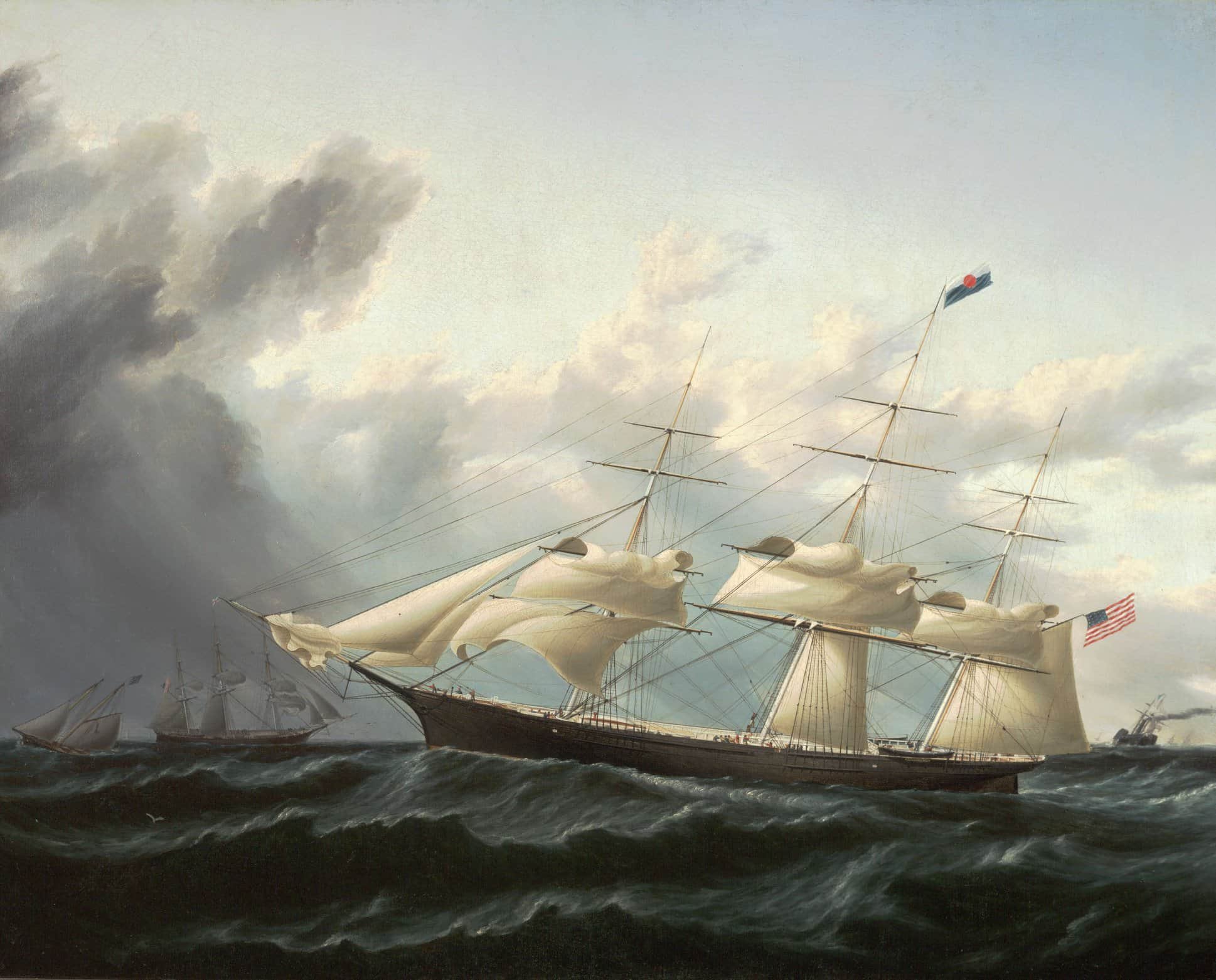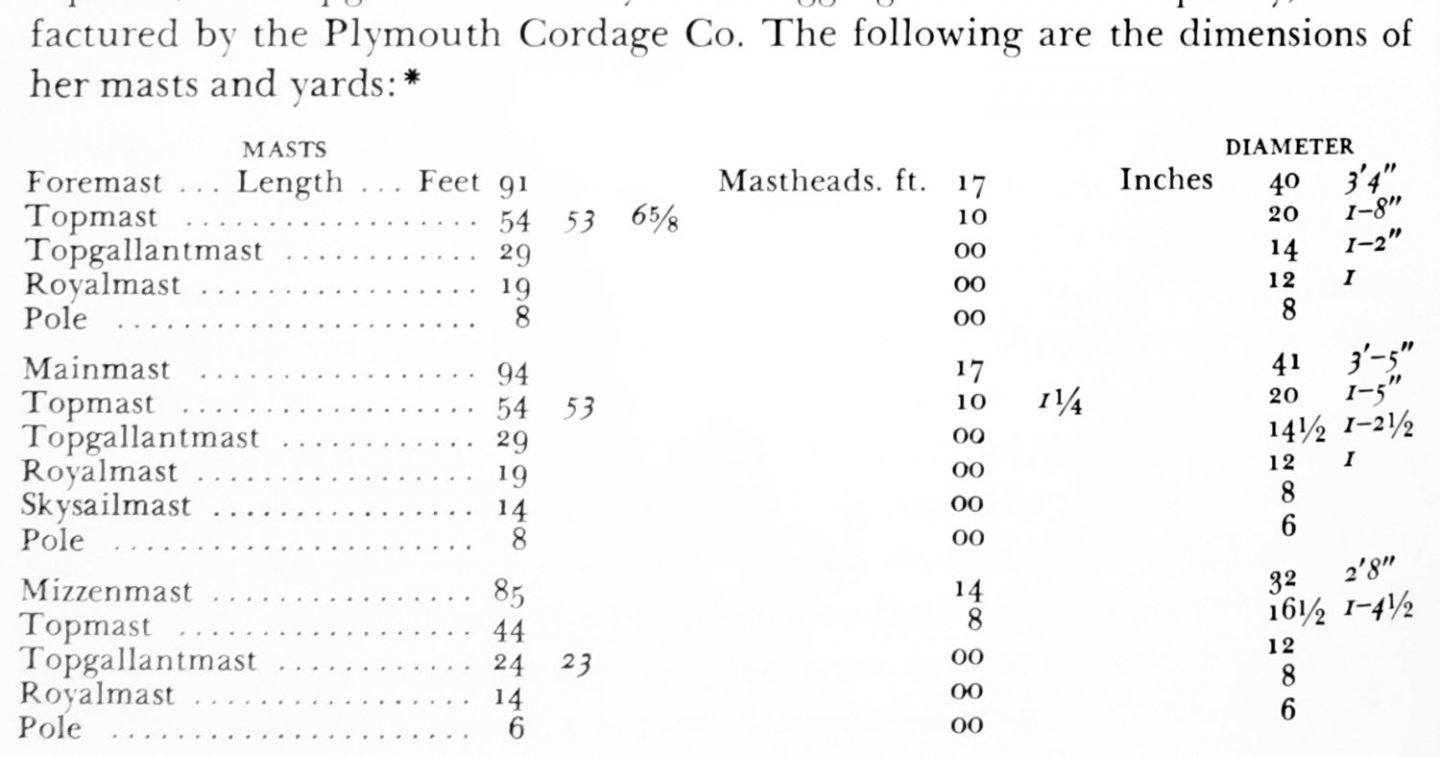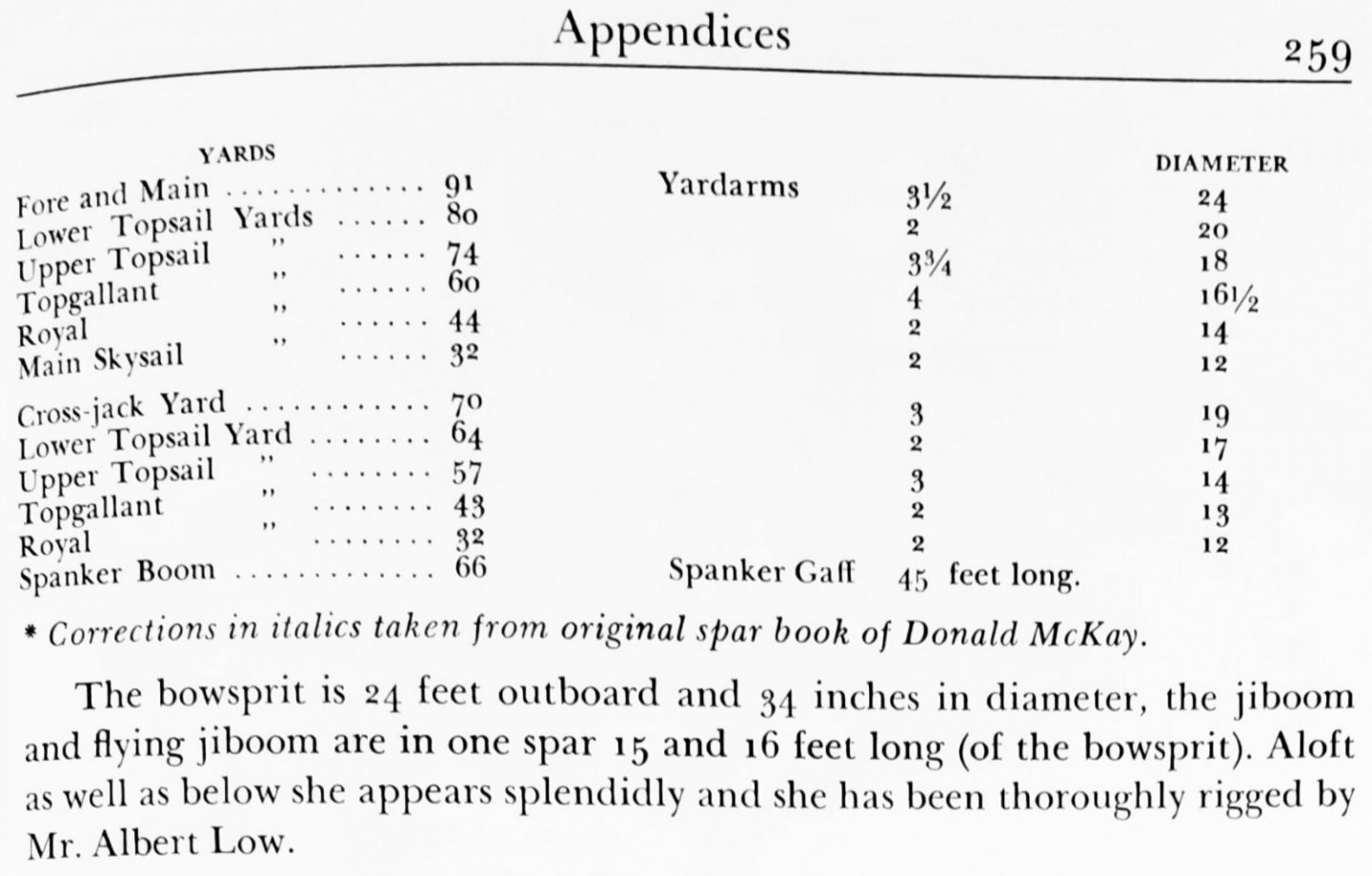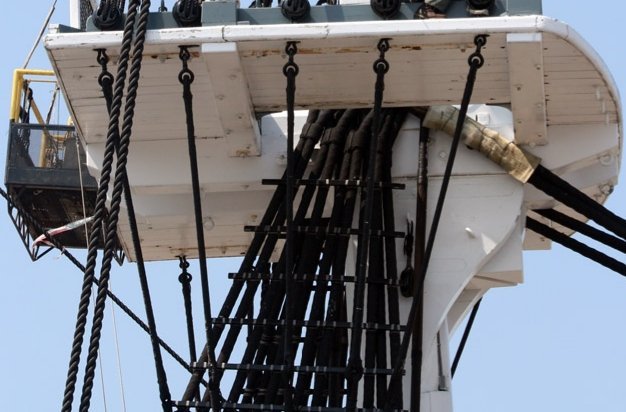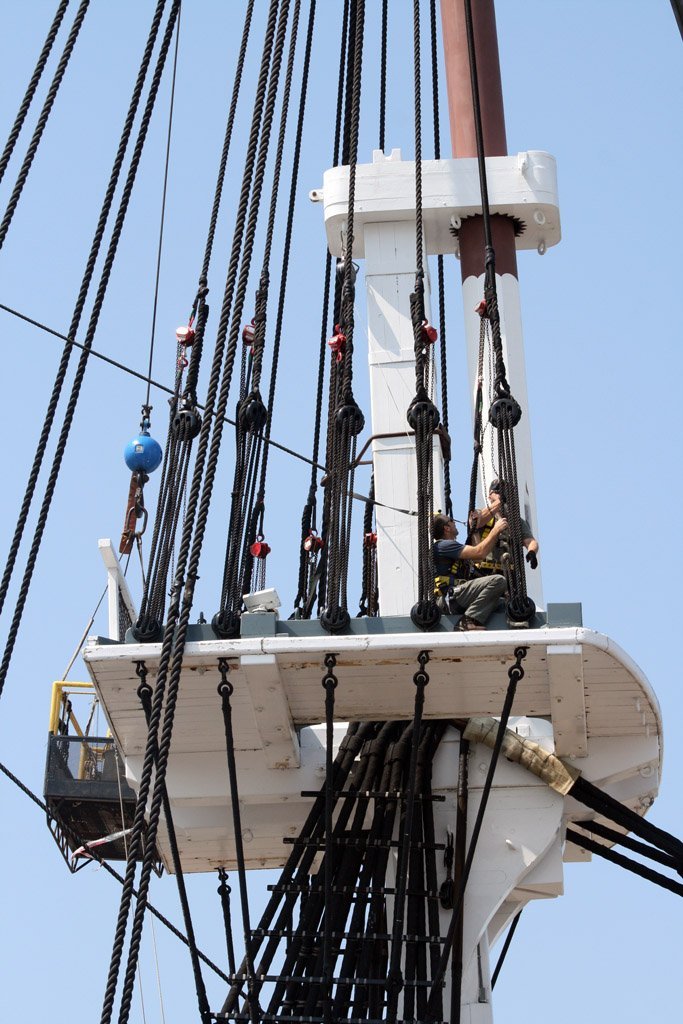-
Posts
2,056 -
Joined
-
Last visited
Content Type
Profiles
Forums
Gallery
Events
Everything posted by ClipperFan
-
Vladimir, when you consider exactly what Lifeboat Davits are there for, it wouldn't make sense to dismantle them while at sea. It's one thing to mount boats on roofs but can you just imagine the utter chaos trying to desperately remount and re-rig your Boat Davits as the ship founders around you? However it also makes total sense that they need to be in a sensible position where they don't interfere with the operation of the ship. Rob pointed out to me the exact placement of the Davits on the outside of Glory's hull but I'm still unsure as to that exact placement so I would ask him for precise placement. While I agree it would be awesome to have been able to see a McKay Clipper in real life, I suspect it would be a huge shock to actually experience the demands of being a member of the crew on any American American Clipper Ship. The men as well as their Ships were all driven hard, "twenty four-seven." There's a reason that for a decade at least, American Clipper Ships dominated the Nautical World for record shattering journeys. But I too share a romantic affinity for these magnificent, impressive vessels. What I didn't fully comprehend until we did Glory's reconstruction, is how truly massive McKay's Clippers truly were. Even his first "Staghound" was the largest ship in the world when launched.
-
Rob, I was attempting to show Vlad that mounting points for the Boat Davits were on the outside of the Hull, since he gave me the impression that he wasn't sure exactly where those Davits mount. In no way did I indicate the exact locations, only a general position. I chose Champion since the Boat Davits are so clearly visible.
-
https://www.google.com/amp/s/batgurrl.net/2021/07/03/demise-of-a-clipper-ship-on-endolyne-beach/amp/ Rob, Vladimir while looking for more images of Glory's bilge pump, I came across Michael Mjelde's deck plan illustration. It's also inaccurate as it shows the flywheels inside the main fire rail, while photos clearly show they were mounted outside. This is a somewhat poignant article and indicates her final resting place as well. Scroll through the images and you'll also see a magazine excerpt showing her beautiful figurehead described as being 90" tall.
-
Vladimir, beautiful work on the Mainmast fire rail and bilge pump. The sole concern that I have is the gaps on your 2 pump flywheels. I've attached a link to the Baclutha website with specific focus on her Bilge pump. While Rob's correct that Glory's pump wheels mount outside the rail, Balclutha's mount inside. There are handles which attach to the wrought iron crankshaft, which similar to how an old Model T Ford's engine would be turned over is how the flywheel crankshaft would be turned over.
-
Vladimir, when you share images, please don't overlap them. It's not possible to see all examples you show this way. Depicting a working ship in the process of being towed out would add more interest and realism to your vessel. I'm not sure if this would lower the amount of blocks used, since all running rigging would still be necessary, maybe Rob can share more insight into your concern. I would think that the six lower & upper topsails would be the first set. Main courses would probably be getting readied to be lowered and the rest would still probably be tightly fueled. Good luck!
-
Rob, I sort of followed your description but these process images are much more illustrative. I admire your creative inventiveness. The finished product is amazing in its authentic fealty to the real thing.
- 3,560 replies
-
- clipper
- hull model
-
(and 2 more)
Tagged with:
-
Rob, Glory's main yardarm looks larger in this image due to the fact that it's the sole remaining spar. When she was fully rigged, these massive spars actually look smaller in proportion to each other. A hallmark of McKay's wonderful Clippers were his aggressive yardarm specifications.
- 3,560 replies
-
- clipper
- hull model
-
(and 2 more)
Tagged with:
-
Vladimir, it's nice to see the great progress you've made on mating your large "GLORY of the SEAS" replica. All I can think is how truly imposing she must be in person. I'm sure the beautiful images you share don't fully do her justice. It may be perspective distortion from the photos but in case not, I'm just going to let you know my observations. Please understand in no way is this intended to be critical, only to aid in your goal of achieving the most accurate replica. At 94', the lower mainmast is 3' taller than the 91' lower foremast, yet the photo makes it appear as if the foremast is slightly taller. Both topmasts are 54' (more precisely fore topmost is 53' 6&5/8", main topmost is 53' per McKay's corrections). For some reason, the main topmost again looks shorter. Combined dimensions above main topmast are 70' a full 14' taller than the 56' high foremast components. Meanwhile at 85' the mizzenmast is just 6' shorter than the foremast. However, since the foremast has a 17' masthead and the mizzen's is just 14' the actual height difference is just 3'. It looks much shorter than that on your replica. I've included 2 appendices which list all of Glory's mast and yard dimensions taken from Michael Mjelde's sources.
-
George, I just want to add in that the most impressive feat you professional level modelers display is your willingness to scratch build practically anything. More amazing, is how you make it look so easy too. Great work!
- 602 replies
-
- Flying Fish
- Model Shipways
-
(and 2 more)
Tagged with:
-
Rob, thanks for sharing all these scratch build construction procedures. I'm so used to having all pre built, plastic pieces ready to assemble (even with their gross inaccuracies) that to consider scratch building in wood no less is sheer intimidation. But you never know. Seeing your and Vlad's progress is just so inspiring, you never can tell for sure if someday I might not be tempted too.....
- 3,560 replies
-
- clipper
- hull model
-
(and 2 more)
Tagged with:
-
Rob, as the popular saying goes "it's the devil in the details". Having said that, I absolutely love your detail work. Nicely done on Glory's fiferail.
- 3,560 replies
-
- clipper
- hull model
-
(and 2 more)
Tagged with:
-
Rob, you must have Tom Thumb on your Shipyard's payroll.....
- 3,560 replies
-
- clipper
- hull model
-
(and 2 more)
Tagged with:
-
Rob, Vladimir, Pat, here's a close up of USS Constitution's Foretop. The Shrouds are arranged in dual loops from Bow to Stern. While you can't see what they're arranged through it appears they all go through a single long source.
- 3,560 replies
-
- clipper
- hull model
-
(and 2 more)
Tagged with:
-
Banyan, Pat thanks for this explanation with associated images. Since all Shrouds align to a similar location, this simple solution makes eminent sense. It would be interesting to see if American counterparts utilized the same approach.
- 3,560 replies
-
- clipper
- hull model
-
(and 2 more)
Tagged with:
-
Rob, beautiful mast, perfect symmetry. You consistently do such impressive, professional work!
- 3,560 replies
-
- clipper
- hull model
-
(and 2 more)
Tagged with:
-
Rob, it'll be fascinating to see your step by step rigging procedure. Thanks for continuing to share this painstaking process.
- 3,560 replies
-
- clipper
- hull model
-
(and 2 more)
Tagged with:
-
Rob, you most definitely have an eagle eye. Great catch on those tightly furled sails. I didn't even realize they were there until you pointed them out!
- 3,560 replies
-
- clipper
- hull model
-
(and 2 more)
Tagged with:
About us
Modelshipworld - Advancing Ship Modeling through Research
SSL Secured
Your security is important for us so this Website is SSL-Secured
NRG Mailing Address
Nautical Research Guild
237 South Lincoln Street
Westmont IL, 60559-1917
Model Ship World ® and the MSW logo are Registered Trademarks, and belong to the Nautical Research Guild (United States Patent and Trademark Office: No. 6,929,264 & No. 6,929,274, registered Dec. 20, 2022)
Helpful Links
About the NRG
If you enjoy building ship models that are historically accurate as well as beautiful, then The Nautical Research Guild (NRG) is just right for you.
The Guild is a non-profit educational organization whose mission is to “Advance Ship Modeling Through Research”. We provide support to our members in their efforts to raise the quality of their model ships.
The Nautical Research Guild has published our world-renowned quarterly magazine, The Nautical Research Journal, since 1955. The pages of the Journal are full of articles by accomplished ship modelers who show you how they create those exquisite details on their models, and by maritime historians who show you the correct details to build. The Journal is available in both print and digital editions. Go to the NRG web site (www.thenrg.org) to download a complimentary digital copy of the Journal. The NRG also publishes plan sets, books and compilations of back issues of the Journal and the former Ships in Scale and Model Ship Builder magazines.

